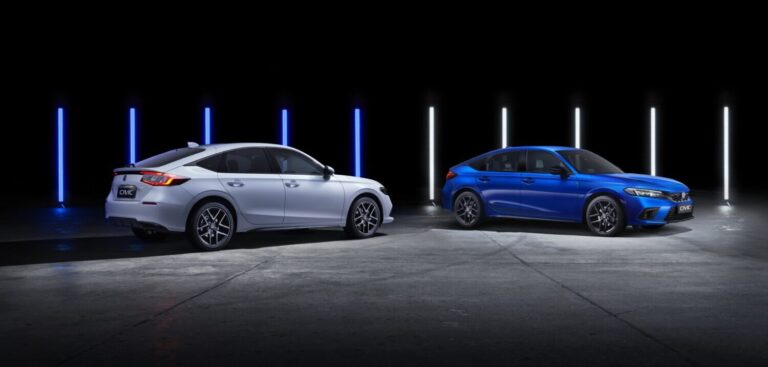Auto maker Honda has released the latest version of its Civic hatchback with the range now including the option of its e:HEV hybrid powertrain.
The Civic e:HEV sees the deployment of a new 72-cell lithium-ion battery and two compact electric motors, paired with what Honda says is a redeveloped 2.0-liter direct-injection, Atkinson-cycle engine. Combined, the powertrain delivers a maximum motor output of 135kW and 315Nm of torque.
Honda states that the latest iteration of the internal combustion engine has several new elements within its architecture, which combine to help achieve a stated thermal efficiency (TE) of 41%, one of the highest figures within the automotive industry for a production road car.
The layout of Honda’s e:HEV hybrid system is interesting and bucks the conventional approach to hybridization – it has many of the traits of a range extender/series hybrid layout but with the ability to directly power the wheels via the ICE.
The ICE is connected to a single-speed transmission, which houses the two electric motors, with a clutch between them. One motor is primarily used as a generator, the other for propulsion, and in most operation modes, the ICE spins the generator, which then feeds electrical energy directly to the propulsion motor, while also charging the rear-mounted battery pack with any excess power.
During low-speed driving, the ICE operates at an almost steady state, within its most efficient RPM range, hence the impressive 41% TE. In pure EV mode, power can be fed from the battery with the ICE inactive, though the small capacity of the battery means range is very limited as a pure EV (there is no plug-in charging option).
The main role of the battery is to provide a boost to the drive motor under heavy load. At high speeds, the ICE becomes the primary means of propulsion, with the clutch in between the motors engaging to transmit drive directly to the wheels. Overall, the system nets WLTP emissions of 110g CO2 /km with a fuel consumption of under 5L/100km.


